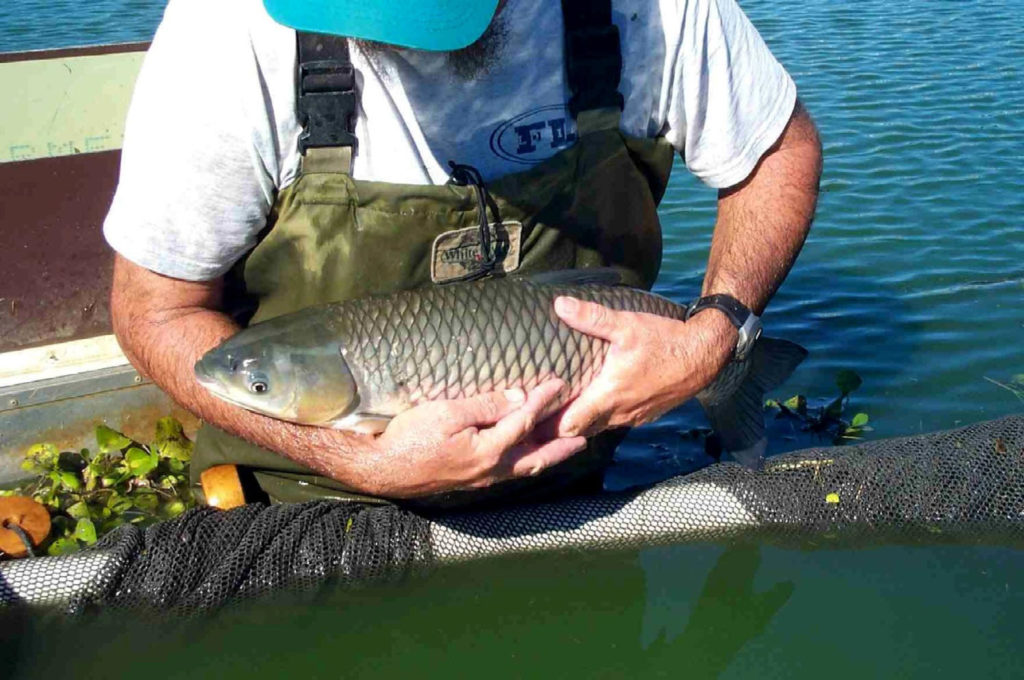
May 14. By Dave Yochum. The world, according to sterile carp, is an aquatic environment with Hydrilla, and Lake Norman apparently has plenty. Look for a lot more fish—as in 10,200 more—in Lake Norman starting tomorrow, thanks to the Lake Norman Marine Commission. The fish, which will be placed in the lake at Blythe Landing starting at 8 am, will munch on the 500-plus acres of the invasive aquatic weed Hydrilla.
It was found last fall by Duke Energy in the Ramsey Creek area in Cornelius.
Invasive species can be an animal, plant or fungus. Typically, it’s a species that has been brought into a new environment and causes damage to the environment, the economy or human health.
Hydrilla can get so thick it can stop a boat—or clog an intake pipe for cooling water at McGuire Nuclear Power Station. It competes with native aquatic plants, meaning over time it will wipe them out. A bacteria associated with hydrilla can hurt waterfowl and raptors.
”There was a similar situation in 2004 when about 400 acres was found, the largest amount in Work Creek off Exit 33,” said Bob Elliott, a member of the marine commission.
Some 6,000 grass carp were stocked, but it was apparently not enough, even though more grass carp were put in each year.
”Since not enough were put in the Hydrilla has returned and this time there are plans in place to put enough fish in each year to ensure it won’t come back again,” says Elliott, a Cornelius resident.
Don’t eat them, of course, but catch and release is OK. Elliott says it is now illegal to to catch the sterile grass carp.
The carp are all at least 12 inches in length. First year mortality is estimated at 30 percent, Elliott said.
“Next year it is planned to put in 5,100 and then an annual stocking of a few thousand each year to handle Hydrilla being introduced from the upper reservoirs or fish tanks people dump in the lake,” Elliott said.





